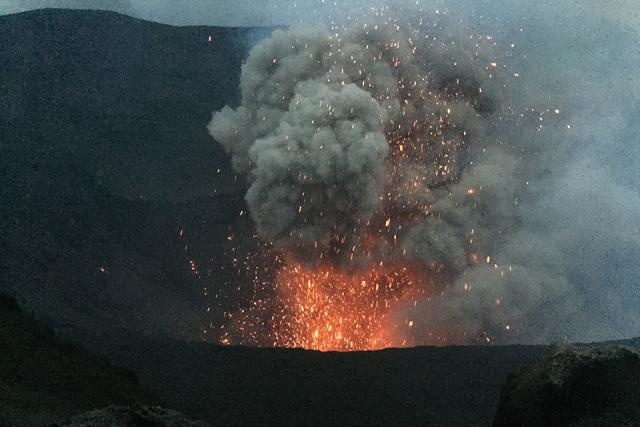
University of Iowa volcanologist Ingrid Ukstins spent two weeks collecting samples from Yasur, a continuously erupting volcano on Tanna, an island in the remote South Pacific archipelago of Vanuatu, to study its chemical composition and determine how the gasses it produces may be affecting people who live nearby. Photo by Ingrid Ukstins.
By Richard C. Lewis, Iowa Now
For two weeks last fall, Ingrid Ukstins lived life on the wild and dangerous side.
The University of Iowa volcanologist spent her days collecting samples from a volcano on Tanna, an island in the remote South Pacific archipelago of Vanuatu. The volcano, called Yasur, spews out flaming masses or “bombs”—some the size of a small car.
So, Ukstins trained her eyes on Yasur’s craters, about a quarter mile above sea level, to wait for molten rocks to be ejected—and “try not to get hit on the head by any,” she adds.
“I would just wait for a big explosion and watch for one of the chunks of rock to fall somewhere,” says Ukstins, associate professor in the UI Department of Earth and Environmental Sciences. “When you find the hole where the rock hit, you know it just came out of the volcano.”
Ukstins traveled to Yasur because it’s a living laboratory: The volcano has been erupting continuously since at least 1774 when it was first observed by the British explorer Captain James Cook. New research has shown it has been ejecting material without major pause for more than 1,400 years—and possibly as long as 20,000 years.
“It’s about as close to a continuous record as you can get,” Ukstins says.